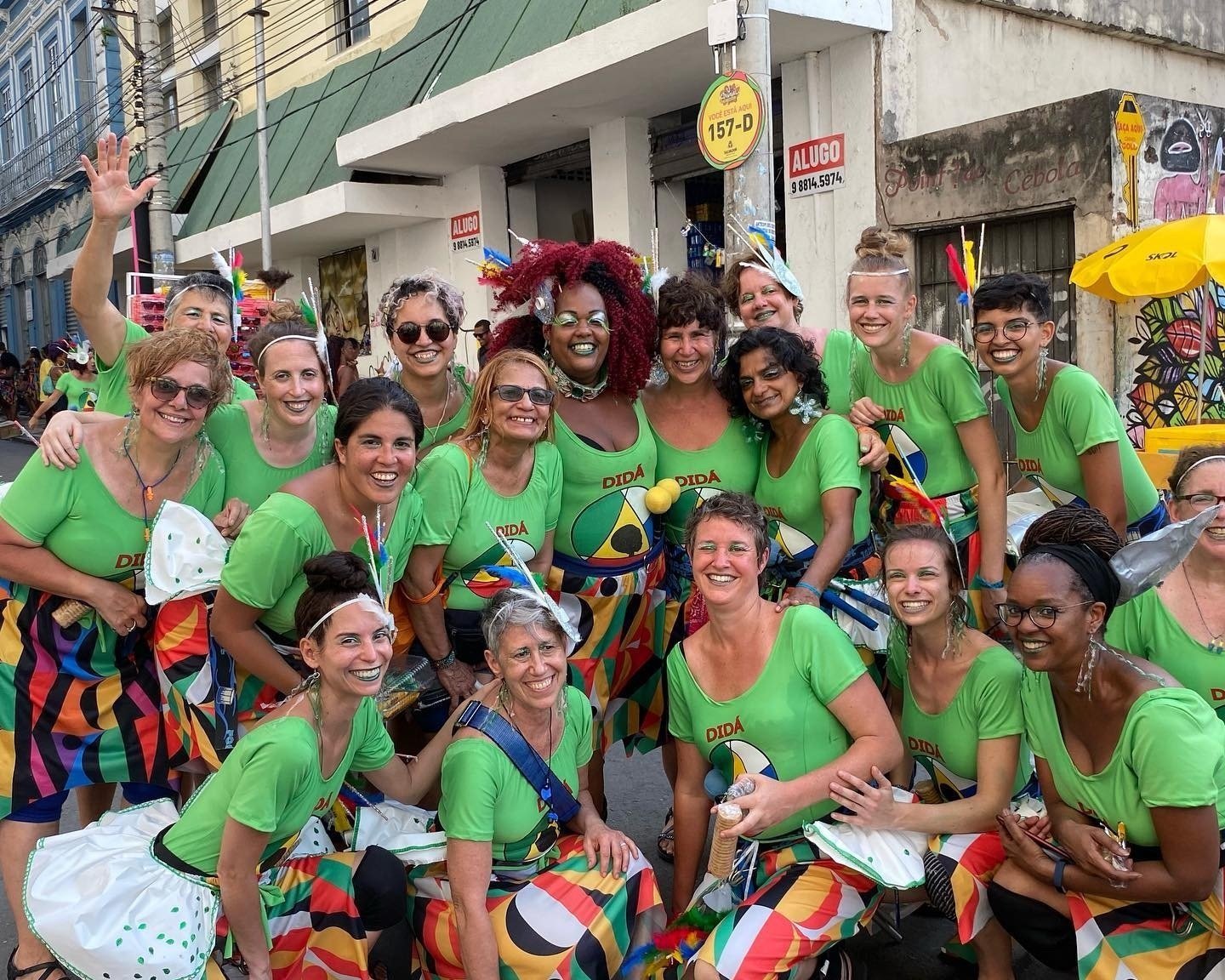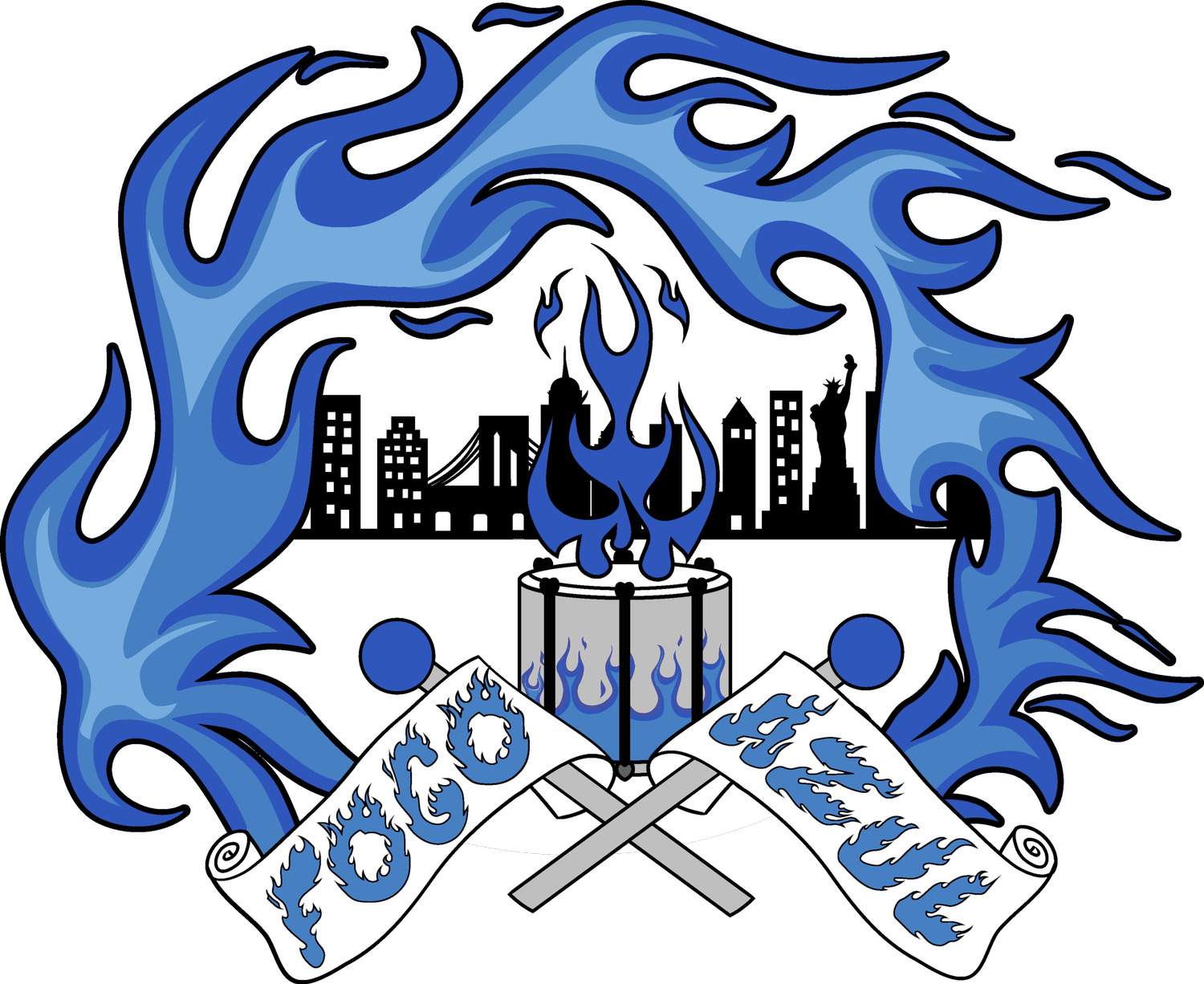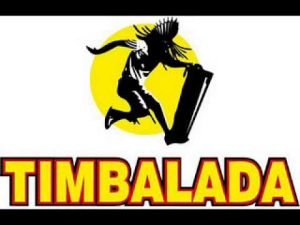
Samba Reggae History
What is Samba Reggae?
Samba reggae is a genre of music that comes from the communities, cultural institutions, and streets of Salvador da Bahia, Brazil. Created in the 1970’s as a mixture of Brazilian Samba de Roda and Jamaican Reggae, by the “Father of Samba Reggae” named Neguinho Do Samba, most historians and locals will say that Samba Reggae music is an extension of the Black Pride movement and is noted as being significant in returning samba to its African roots and identity. Samba reggae was first played publicly by an Afro Bloco called Ilê Aiyê in 1974, which was called Samba Afro at the time. Afro blocos are neighborhood based communities that encourage cultural activities that are rooted in political and social programming, encouraging race consciousness which was mostly exemplified via music. Afro Blocos bring together music, race, religion, language, and expression of resistance to combat racism, emerging as cultural and political projects to combat prejudice, and make African history known. Afro Blocos also serve to its community members to acknowledge racial awareness, self esteem, education, and general wellness of the neighborhood.
Ile Aiye
Ile Aiye, the first Afro Bloco community organization was founded officially on November 1st, 1974, and is located in the Curuzu/Liberdade neighborhood, which has the largest population of African descendents in Salvador. Historians say that when Ilê Aiyê came to the streets in 1974, it was the start of the Bahian Carnival revolution-playing new rhythms from the African tradition. Historically, Carnival groups of Afro-Brazilian descent were not allowed to be in the Carnival parades in Salvador-until 1974 when Ilê Aiyê gate crashed the carnival parade, and brought their samba reggae rhythms to the streets that were so used to hearing Axe Music.
Samba Reggae Music starts to grow
Olodum
On April 25th, 1979, the second Afro Bloco, named Olodum was formed. It was led by Mestre Neguinho do Samba, who was one of the drum leaders of Ilê Aiyê. One of the important things that he did was he eliminated the traditional hand and stick style of playing the repinique drum (such as in Samba from Rio de Janeiro). Similar to the style of the Afro-Brazilian religion of Candomblé, he incorporated two sticks in each hand that would allow drummers to play faster. This made Olodum different than Ile Aiye. Another way it was different is that it was (is) an organization that wasn’t as strict on membership, meaning, Olodum welcomed all people-while Ile Aiye only welcomed people who were exclusively Afro-Brazilian. Olodum still very much is an afro bloco playing samba reggae that keeps its roots in African socio-cultural values, promoting respect for all cultures, diversity, and the uniqueness of all humans.
Olodum, Ile Aiye and all Afro Blocos are known for their protest songs. Their musical lyrics are original and fight discrimination and defend the very real struggle of Afro Brazilians to ensure their civil and human rights. They do this with their signature percussion rhythms and deep roots in social responsibility, which are their trademarks.
Male Debale
Male Debale, founded in 1979 in the Salvador neighborhood of Itapuã, is another Afro Bloco playing samba reggae. It is now one of the largest afro-ballets in the world, with up to 2,000 dancers in simultaneous rich, African-inspired choreography. The group was founded to give residents of the distant neighborhood of Itapuã a role in carnaval. Since the bloco’s inception, their social works has emphasized fighting against racism and achieving equality for Afro-Brazilians.
The name Malê was chosen as a homage to the black Muslim slave revolt of 1835 (Revolta dos Males). Debalê was chosen by the founder, Josélio de Araújo, because balé is the Portuguese word for ballet and a play on that word creates a connotation with positivity and happiness, or any affirmative translation.
Muzenza
Muzenza was founded in 1982 in the neighborhood of Liberdade by Barabada Mundao and one of the leaders of Olodum, Geraldo Miranda, who decided to leave after some disagreements with other leaders. They were formed as a tribute to Jamaica: Bob Marley, Jimmy Cliff, and the Rastafari movement. They use the colors of the Jamaican Flag-green, yellow, and black in their costumes and designs, including the Rastafari’s primary symbol – the Lion of Judah.
Muzenza is a term from the Bantu language, of Africa. Muzenza means “Lao from Nago”. Additionally, they work closely with Capoeira groups, and dance is a large part of their organization. Muzenza was adored by young revelers in the 1980s, becoming known as the “reggae block” or Muzenza do Reggae. At the block’s first Carnival, in 1982, about 4,000 revelers paraded. Gradually, Muzenza consolidated itself as one of the blocks that develop the greatest number of rhythmic variations in the Salvador Carnival.
Os Negoes
Os Negoes: The afro block Os Negões was created on February 11, 1982 by a group of activists, artists and sportsmen (mostly basketball players) who together attended the parties in Salvador, but at Carnival they were always divided between the different afro blocos in the city. In order not to remain separated during the revelry, they decided to create the 1.80m (5ft 9in) block called Os Negões, and only allowed men who were at least 5ft 9in tall. However, in 1995, they started to allow women and men under 1.80m in height. Since 1995 that rule has been removed. Paulo Roberto Pereira do Nascimento, president of the bloco says that in order to join the group, the person has to be invited by one of the existing members. The criterion for admission was that the person had identification with Afro-Brazilian culture, historical and cultural knowledge and about ethnic-racial issues.
Os Negoes offers a pre-university entrance course in partnership with the State University of Bahia. It also carries out a project to qualify inmates. It maintains the Capoeira e Cidadania project, which involves literacy training for young people and adults, dance and percussion workshops.
Ara ketu
Ara ketu: Founded on August 8, 1989, in the community of Periperi , Subúrbio Ferroviário de Salvador, it follow the other Afro Blocos having it’s roots with a lot of struggle and resistance of the Afro Brazilians throughout all these years. Derived from a Yoruba expression, their name means “The people of the Ketu Kingdom”, an African city, state, and part of the ethnic group of the Yoruba, which today is an area between Nigeria, Benin and Togo. Ara Ketu’s first Carnival theme was a homage to the Orisha Oxossi-the King of the Hunt. That carnival marked Oxossi as the protector of Ara Ketu, and keeping his colors of Blue and White and his symbol of the bow and arrow as their visual elements.
This Afro Bloco transmits a strong African vibe, with more earthy tones because they do not use any caixa’s (snare drums). African cultural influences, as well as Condomble (the West African Yoruba religion/traditions) play a large role. In the 1990’s, the group took their drumming and added synthesizers, loop samples, wind instruments, other electronic instruments and created a new music style. This new style became very popular. The song lyrics were ones that spoke of the people and for the people, with African symbols and codes of the Afro ethnic groups- all combined under the influences of Contemporary music. Ironically, they first gained popularity on music tours outside of Brazil-to Europe and Africa, before coming back to Brazil to achieve their Brazilian popularity.
Timbalada
The next Afro Bloco is Timbalada, started in 1991 in the Candeal neighborhood of Salvador, it is not quite an Afro Bloco but rather a Percussive Afro-Pop band. The rhythms of Timbalada have a strongly African, Afro-Caribbean and African-American influence. Started by Carlinhos Brown and Tony Mola, in their neighborhood on the streets, it is Carlinhos Brown who brought back the playing of the timbal drum, which was nearly extinct.
Crlinhos Brown is a musician who is very popular in Brazil, and is considered one of Brazil’s most popular artists. The name of the group, Timbalada is named for the Timbal drum. Timbalada’s stage performance includes up to ten timbals which are part of a set furthermore containing 5 surdos, repiniques, timbales, a drum set and a “percuteria” (a mixture between drum- and percussion set). Three singers, a brass section, a bass and a keyboard complete their line up! During carnival, up to 200 timbaus perform in the bloco!
Timbalada had outdoor rehearsals that took place in Candyall Ghetto Square, in Candeal. It became a party spot in the city of Salvador, attracting both people from Salvador as well as tourists. Additionally, Carlinhos Brown founded a n organization in Candeal, called the “Pracatum project” which hosts a school for music and dance.
The musicians in Timbalada have a different look to them- usually play shirtless and paint their bare torsos with white, African patterns and symbols, with their instruments having a similar design.
Female Drummers enter the scene
Didá Banda Feminina
Didá: Didá Educational and Cultural Association and Didá Band is an all women Afro Bloco and cultural/educational organization that was founded by Neguinho do Samba on December 13th, 1993. Didá is a Yoruba word that means “power of creation”. They were formed by, and a house in the Pelourinho was bought, with the money that Neguinho do Samba made from Paul Simon while they toured together. Their mission is similar to the other Afro Blocos, but with the goal of improving the quality of life of women and children specifically.
Dida is also deeply rooted in the African diaspora. They have a patron “saint” so to speak of their organization. Her name is Anastacia, the legendary slave woman who resisted the burden of a racist society, and subsequently found herself the bearer of a metal face mask, or muzzle.
Anastácia was a peaceful loving woman, and beautiful. She was the object of prejudice, of envy, and of sexual abuse. She alleviated the siffering of other by speaking. Her slave masters got wind of these healing powers, and put the metal muzzle on her, only allowing her to take it off to eat. She still was able to heal people and perform miracles even while wearing the muzzle, so it was removed, but unfortunately in the meantime she developed gangrene in her face and died. You can often see the women of Dida wearing similar masks making reference to her legacy and reminding the public of the continued oppression of Afro Brazilian women. The idea of using Anastacia as a symbol emerged in 1994 at the International Day of the Woman in the Pelourinho.
Cortejo Afro
Cortejo Afro: “The African Parade” as translated is one of the newest Afro Blocos in Salvador. Founded on July 2nd, 1998 in the neighborhood of Pirajá, it is also a community organization that focuses on Afro Brazilian culture rooted in political and social programming. They are guided and attest to the strength of black culture and identity by the Candomble Terreiro named Ile Axe Oya, and are under the spiritual and inspirational guidance of Mae Santinha, one of the most respected Mothers of Santo in Bahia.
Their founder, Alberto Pitta, is an artist and designer and their colors and themes are intended to rescue the colors, sounds, and rhythms of Carnival, which in his opinion “Time erased making Carnival one of the biggest parties in the world.” He re-introduced the white on white with blues and silvers, which are the colors of Oxalá, who is an Orisha. He is believed to be the Sky Father and the creator of humans, which were brought to life by the smooth breath of Olodumare. Oxala is the father of all Orishas.
Bankoma
Bankoma: Bankoma is one of the more traditional Afro Blocos, and it’s name is of Bantu origin which means “people gathered in celebration”. It is centered around the terreiros of Salvador, and during Carnival the Afro Bloco is accompanied by 350 terreiros! Bankoma first took to the streets in 2000, but the terreiro was founded in 1948.
The origin of the Afro Bankoma bloco emerged from art-education workshops held at Terreiro São Jorge Filho da Goméia, aimed at young people and the local community. The bloco appeared as a way to present to the population with what was produced inside the terreiros. Bankoma, like the other Afro Blocos promotes regular activities that strengthen identities, raise self-esteem, and promotes Afro Brazilian culture in their community.
They regularly participate in Carnival in Salvador. The group is known to fill a gap in the Bahian revelry by highlighting the presence of Afro culture in society.
Thanks for reading a little about the history of Samba Reggae! The author of this article is Stacy Kovacs. See below for links for references. She wrote this article from internet resources, from her own experiences from travelling to Salvador da Bahia 8 times to train musically, and from historians there telling her the history.
We’ve included some video links you may enjoy as well!
Websites used as references:
All of the Bloco names have links embedded in them to their various websites which were used for information and photos.
https://www.salvadordabahia.com/categoria-experiencias/cidade-da-musica/
https://atarde.uol.com.br/cultura/noticias/1094944-morre-neguinho-do-samba,-inventor-do-samba-reggae
Resistance and citizenship in the songs of Ilê Aiyê and Olodum, by Antonio Luciano Tosta (https://www.jstor.org/stable/41349348?seq=1#page_scan_tab_contents)
Olodum da Bahia: A history of cultural inclusion, by Ruy José Braga Duarte https://journals.openedition.org/factsreports/1352
Africa in Brazil: How Ilê Aiyê Brought Blackness to Salvador’s Carnival (https://www.okayafrica.com/how-ile-aiye-changed-salvadors-carnival-forever-and-uplifted-black-people-in-brazil/)
https://www.avodrums.com/Samba-Reggae.html
Films on the roots of Samba Reggae:
Yemanjá: Wisdom from the African Heart of Brazil (http://www.yemanjathefilm.com/)
Rhythmic Uprising (http://www.rhythmicuprising.org/)
Ebony Goddess: Queen of Îlé Aiyé (https://www.youtube.com/watch?v=TQJ3z4nudtA)
Festive Land: Carnaval in Bahia (https://www.imdb.com/title/tt0382693/plotsummary?ref_=kw_pl)
Ilê Aiyê (The House of Life) (https://www.amazon.com/dp/B0002MFG3W)
Black in Latin America: Brazil, A Racial Paradise? (https://www.youtube.com/watch?v=Gh7c46U5hhY)
The Summer of Gods (http://www.thesummerofgods.com/)
Links to the groups above, as well as some other important people in Salvador:
Neguinho da Samba (http://www.carnaval.com/drum/neguinho/)
Carlinhos Brown (https://en.wikipedia.org/wiki/Carlinhos_Brown)
Ilê Ayê (http://www.ileaiyeoficial.com/)
Olodum (http://www.narin.com/olodum/)
Timbalada (https://en.wikipedia.org/wiki/Timbalada)
Ara Ketu (https://www.allmusic.com/artist/ara-ketu-mn0000595035 | https://pt.wikipedia.org/wiki/Ara_Ketu)
Malê Debalê (http://www.maledebale.com.br/o-bloco/)
Cortejo Afro (http://www.cortejoafro.com.br/)
Filhos de Gandhy (http://filhosdegandhy.com.br/)
Margareth Menezes (https://en.wikipedia.org/wiki/Margareth_Menezes | https://pt.wikipedia.org/wiki/Margareth_Menezes)
Daniela Mercury (https://en.wikipedia.org/wiki/Daniela_Mercury)
Didá Banda Feminina (http://www.dida-salvador.com/english.html | http://www.dida-salvador.com)
Gerônimo Santana (https://geronimocantor.com/)




























